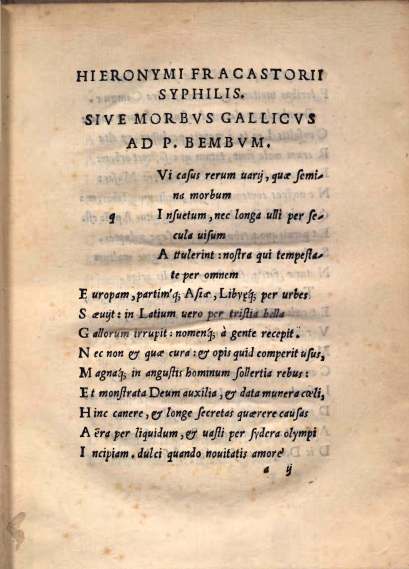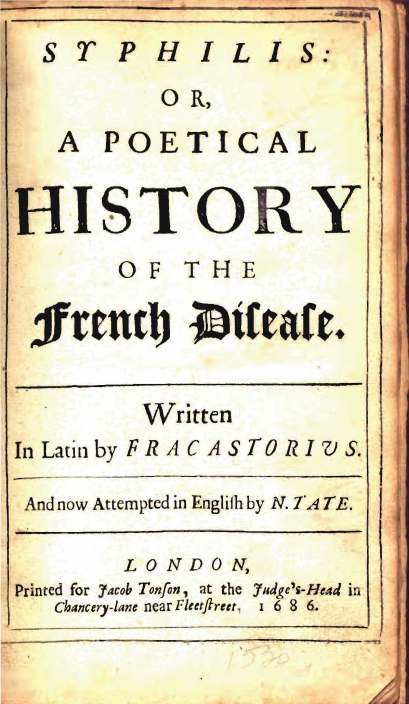By Rebecca Pou, Project Archivist
To celebrate National Poetry Month, we are sharing a poem from our collection each week during April.
Our last poem, An Elegy on the Death of a Mad Dog, is by Oliver Goldsmith (1730-1774). Our Rare Book Room contains an Oliver Goldsmith Collection, which includes 112 editions of his novel The Vicar of Wakefield, along with many of his other works. Most of the collection was donated by Mrs. Alberta Clay, the daughter of NYAM’s first director, Linsly R. Williams, M.D., in 1942.
 Oliver Goldsmith may seem to be a bit out of place in a medical collection, but NYAM has an interest in works of literature by and about physicians. Before establishing himself as an essayist, poet, and novelist, Goldsmith attempted a career in medicine. Goldsmith studied medicine in Edinburgh and Leyden, although it is not certain he ever received his medical degree. In London, he worked for a time as an apothecary’s assistant and a physician, but ultimately he devoted himself to writing. Still, despite his questionable credentials, Goldsmith was considered a doctor and often attributed as “Oliver Goldsmith, M.B.”
Oliver Goldsmith may seem to be a bit out of place in a medical collection, but NYAM has an interest in works of literature by and about physicians. Before establishing himself as an essayist, poet, and novelist, Goldsmith attempted a career in medicine. Goldsmith studied medicine in Edinburgh and Leyden, although it is not certain he ever received his medical degree. In London, he worked for a time as an apothecary’s assistant and a physician, but ultimately he devoted himself to writing. Still, despite his questionable credentials, Goldsmith was considered a doctor and often attributed as “Oliver Goldsmith, M.B.”
An Elegy on the Death of a Mad Dog is found in The Vicar of Wakefield, where the Vicar asks his son to recite it, and in collections of Goldsmith’s works and poetry. This version and the images are from The Poetical Works of Oliver Goldsmith, M.B. from 1863.
An Elegy on the Death of a Mad Dog
Good people all, of every sort,
Give ear unto my song ;
And, if you find it wondrous short –
It cannot hold you long.In Islington there was a man
Of whom the world might say,
That still a godly race he ran –
Whene’er he went to pray.A kind and gentle heart he had,
To comfort friends and foes ;
The naked every day he clad –
When he put on his clothes.And in that town a dog was found :
As many dogs there be ;
Both mongrel, puppy, whelp, and hound,
And curs of low degree.This dog and man at first were friends ;
But, when a pique began,
The dog, to gain some private ends,
Went mad, and bit the man.Around, from all the neighbouring streets,
The wondering neighbours ran ;
And swore the dog had lost his wits,
To bite so good a man.The wound it seem’d both sore and sad
To every christian eye ;
And, while they swore the dog was mad,
They swore the man would die.But soon a wonder came to light,
That show’d the rogues they lied :
The man recover’d of the bite ;
The dog it was that died.
Sources:
“Oliver Goldsmith.” Concise Dictionary of British Literary Biography. Vol. 2. Detroit: Gale Research, 1992. Biography In Context. Web. 24 Apr. 2013.
“Oliver Goldsmith.” Encyclopædia Britannica. Encyclopædia Britannica Online Academic Edition. Encyclopædia Britannica Inc., 2013. Web. 25 Apr. 2013.






















